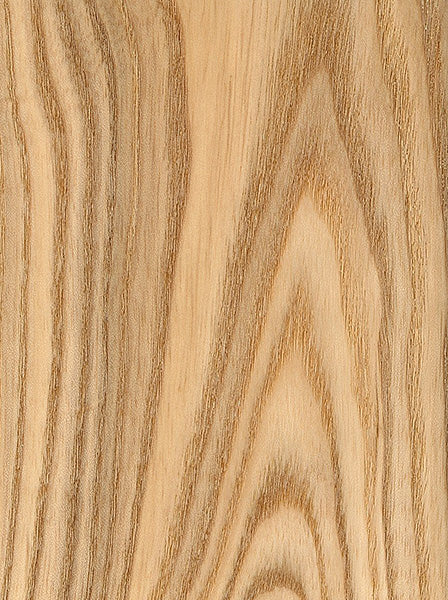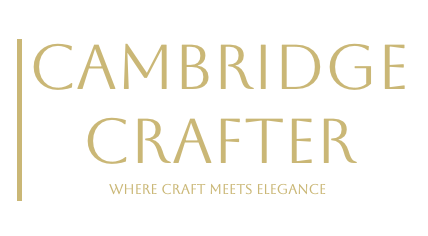
Ash
Ash refers to wood from the Fraxinus genus, with species like European Ash (Fraxinus excelsior) commonly used in the UK, while North American species like White Ash (Fraxinus americana) are also prevalent globally. Ash trees are deciduous, growing in temperate regions across Europe, North America, and parts of Asia. They typically reach heights of 50–80 feet with trunk diameters of 2–3 feet, thriving in well-drained soils, often along riverbanks or in mixed forests.
The heartwood of Ash is typically a light creamy brown, often with a pale yellowish or greyish tint, while the sapwood is nearly white, blending seamlessly into the heartwood. The grain is usually straight and coarse, with a pronounced, open texture and a subtle natural lustre. Ash is known for its bold, contrasting grain patterns, often featuring darker streaks or faint olive-brown lines, especially in European Ash, which can add visual depth. Some pieces, particularly those near the roots, may exhibit figuring like curl or ripple.
Ash has a density of around 650–700 kg/m³, making it hard, strong, and notably elastic, which gives it excellent shock resistance. This elasticity makes it ideal for applications requiring flexibility, such as tool handles (e.g., axes, hammers), sports equipment like hockey sticks, and traditional uses like cart shafts or ladder rungs. It’s also durable for its weight, though it has poor natural resistance to moisture and insects, so it’s best suited for indoor use unless treated.
The wood is easy to work with, machining, turning, and carving well, though its coarse texture can lead to tearout if tools aren’t sharp. It glues, stains, and finishes effectively, often taking on a warm, golden tone with oil-based finishes, which enhance its grain. Ash has a faint, neutral scent when worked, lacking the strong aroma of some hardwoods. It’s widely used in furniture, cabinetry, flooring, and veneer, as well as for bentwood applications like chair frames due to its flexibility when steamed.
Ash is moderately priced and widely available, though European Ash has faced challenges from the emerald ash borer and ash dieback disease (Hymenoscyphus fraxineus), which have reduced supply in recent years. Its combination of strength, elasticity, and attractive grain makes it a versatile choice for both structural and decorative projects.
